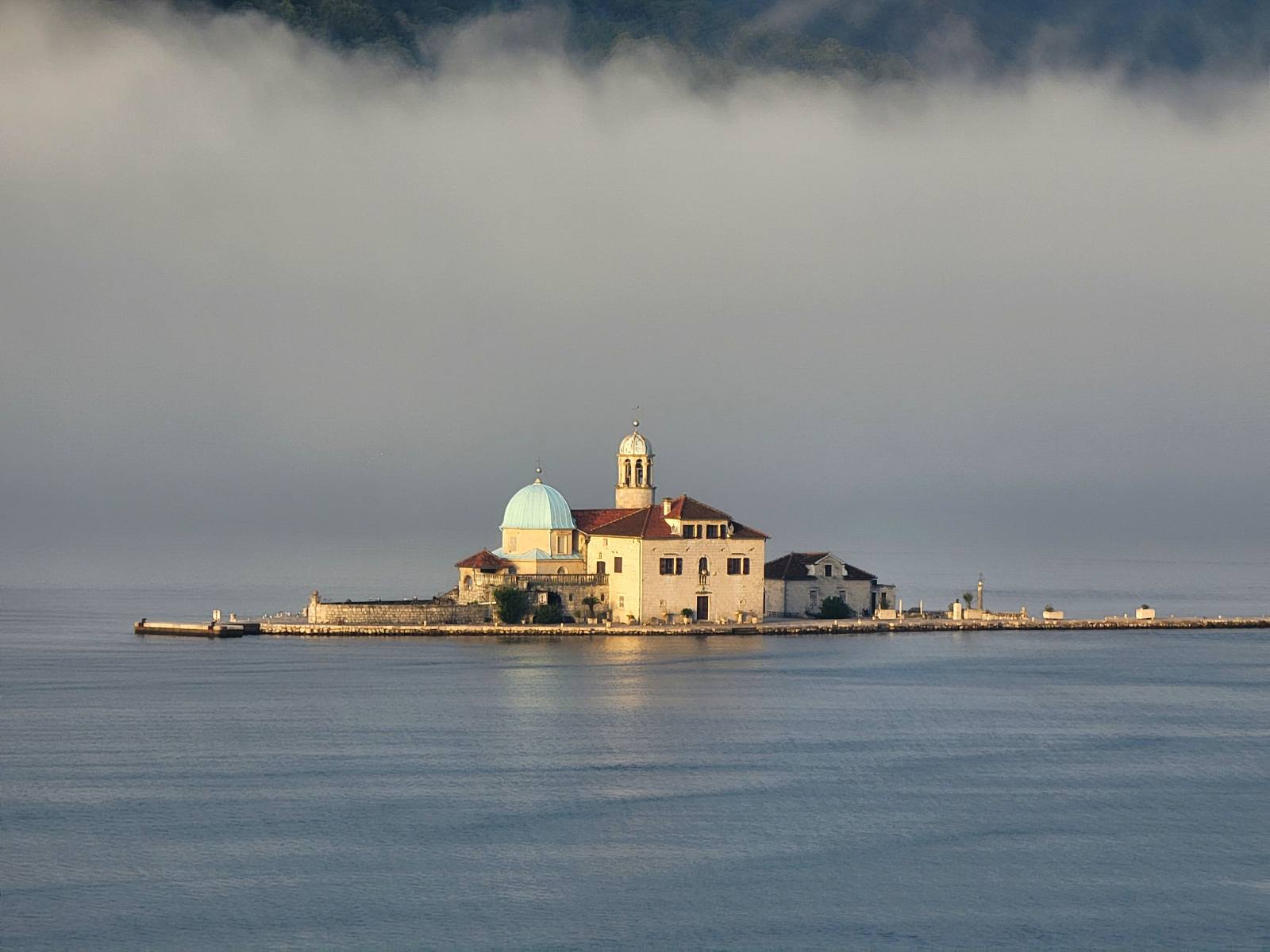In the picturesque town of Perast, nestled along Montenegro's stunning Bay of Kotor, time seems to stand still every July 22nd. As the sun begins its descent toward the Adriatic horizon, a procession of small wooden boats emerges from the harbor, their hulls filled with stones and their masts adorned with branches of apple trees. This is Fasinada—one of the most enduring maritime traditions in the Mediterranean, a ceremony that has remained virtually unchanged for over 500 years.
The Living Legend of Our Lady of the Rocks
The Fašinada is an annual traditional event held in the picturesque town of Perast, Montenegro, every July 22nd. This unique ceremony involves the local community gathering to deposit stones around the island of Our Lady of the Rocks, thereby helping to preserve the island's structure.
The tradition is intrinsically linked to the remarkable story of Our Lady of the Rocks itself. Our Lady of the Rocks is one of the two islets off the coast of Perast in the Bay of Kotor, Montenegro (the other being Sveti Juraj island). It is an artificial island created by bulwark of rocks and by sinking old and seized ships loaded with rocks. The only man made island on the Adriatic, Our Lady of the Rocks is one of two small islets positioned in front of the town Perast in the magnificent Kotor Bay in Montenegro.
Legend has it that on 22 July 1452, local sailors found on a rock the image of the Virgin with Christ in their hands and since then each captain of the Perast, when returning from a successful commercial journey, threw a stone into the sea, at that particular point. Over the centuries, this devoted practice gradually built up the artificial island that exists today.
The Ceremony: A Maritime Ballet
An ancient Perast manifestation, Fasinada, is as old as the island Our Lady of the Rocks itself. It takes place on July 22 every year, before sunset. The locals come to Perast with their small wooden boats, which are ornated with branches of apple trees and filled with stones.
During the Fasinada, religious officials and male descendants of renowned sailors and respected residents of Perast board these adorned boats, while women on the shore greet them. Each year on July 22, at sunset, accompanied by a traditional song sung by a woman, the boats sail towards an island.
The name itself holds deep meaning. The name of the custom - Fašinada, comes from Italian "fascia", what means "chain" formed by boats rounding the island slowly, covered by stones and laurel - a symbol of peace and glory.
A Tradition Preserved Through Time
What makes Fasinada particularly remarkable is its continuity. Every year on July 22, at sunset, a convoy of boats goes to the island to fulfill their ancestors' legacy by throwing stones around the island. The island with the original church was built at the end of the 15th century. The church expanded following the changes in the island's dimensions.
The ceremony follows strict traditional protocols. Every year on July 22, the boats depart at dusk to the tune of a traditional song sung by a woman while only men can be on the boats. They sing acapella, and what makes it so unique is that basically, the whole town gets to participate.
More Than a Ritual: A Community Celebration
The Fašinada is a special tourist attraction ending with a national celebration which is presentation of local culture and traditions, costumes, songs and spirit of Perast and the Boka Kotorska Bay. Afterwards, the party continues as the locals prepare for festivities that extend well into the night.
The tradition serves multiple purposes beyond its spiritual significance. During the Festival of the Fasinada, which is held on July 22, boats pass by the spot and throw rocks into the sea. This practical aspect helps maintain the artificial island's structure, ensuring that centuries of collective effort continue to preserve this unique maritime heritage.
A Bridge Between Past and Present
In our modern world, where ancient traditions often fade into memory, Fasinada stands as a testament to the enduring power of community and faith. The artificial island Our Lady of the Rocks, a sailor's sanctuary for more than 400 years, preserves collections of votive paintings and silver plates.
The tradition connects contemporary Perast with its maritime heritage, when the town was a powerful naval base of the Venetian Republic. Each stone thrown into the waters during Fasinada represents not just a continuation of ancient custom, but a tangible link to the generations of sailors who first built this miraculous island with their own hands.
Experiencing Fasinada Today
For visitors to Montenegro's Adriatic coast, witnessing Fasinada offers a rare glimpse into living history. The ceremony typically begins in the early evening of July 22nd, with boats gathering in Perast's harbor as the sun begins to set. The sight of dozens of traditional wooden boats, decorated with greenery and filled with stones, processing in formation around the island creates an unforgettable spectacle.
The festival is celebrating the founding of the artificial islet and the monastery of the same name – Our Lady of the Rocks. It's a celebration that transcends tourism, offering authentic insight into the deep cultural roots that continue to shape life along the Adriatic coast.
As the boats complete their ceremonial circuit and return to harbor, Fasinada reminds us that some traditions are too precious to lose—and that in places like Perast, the past doesn't just live in museums, but in the hearts and hands of a community that refuses to let it fade away.
Fasinada takes place annually on July 22nd in Perast, Montenegro. The ceremony typically begins around sunset. Visitors are welcome to observe from the shore or arrange boat tours to witness this remarkable tradition from the water.

